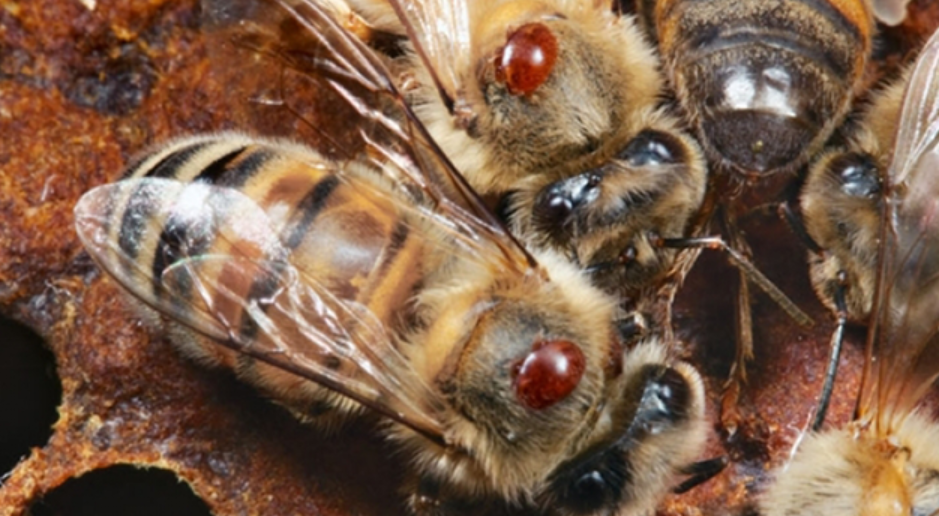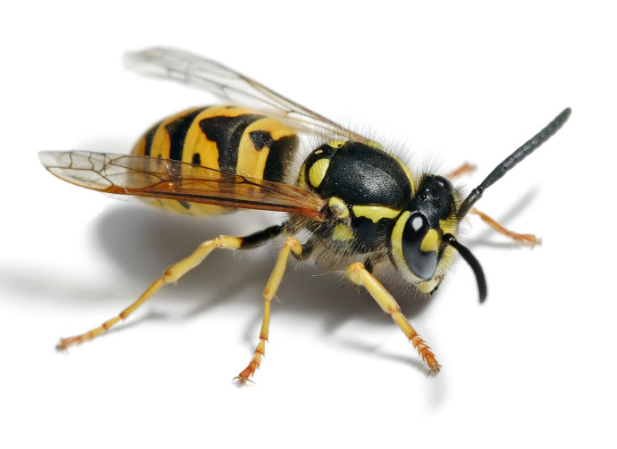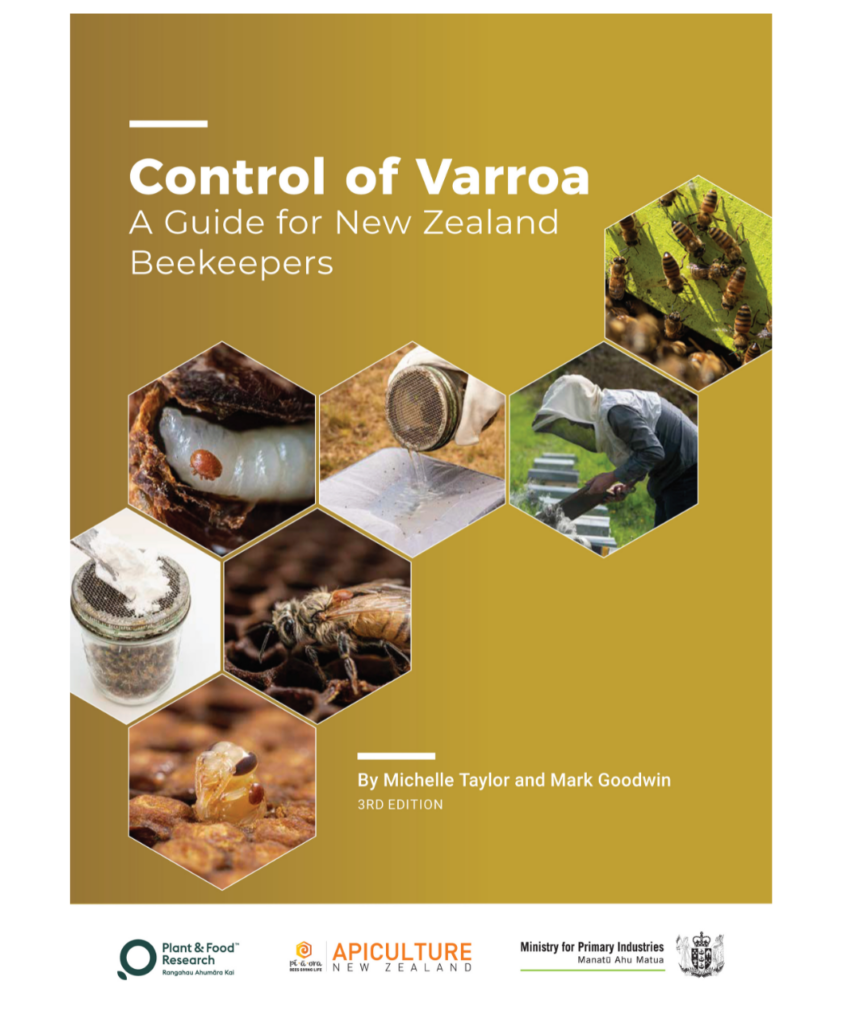
What is Oxalic Acid?
Oxalic – a natural organic acid found in many well-known plants. Examples include its namesake oxalis, as well as rhubarb leaves and spinach. It is a poisonous crystalline powder with a sour taste.
Europeans have used Oxalic as a varroa treatment for many years under the brand Api-Bioxal. Oxalic Acid is also approved in Europe for use when honey supers are on.
Being an acid of Ph 1.3, it is very corrosive so wear protective clothing when handling it. (I have destroyed a good pair of trousers by spilling it on them.) Oxalic Acid is also great for removing rust stains and bleaching timber. Always wear nitrile gloves when handling. You need to use a respirator when vaporising as the vapor can damage your lungs if inhaled.
It is normally sold in powdered crystal form as oxalic acid dihydrate and can have up to 30% moisture content by weight. Hive World now has the option of anhydrous oxalic acid in tablet form. These tablets are less than 1% moisture. See link: https://www.hiveworld.co.nz/product/oxalic-anhydrous-tablets/
Why use Oxalic Acid?
Oxalic acid is suitable for organically treating for mites because it is a natural miticide as opposed to synthetic treatments.
The advantage of oxalic treatment:
- Varroa mites are not known to become resistant to oxalic treatment.
- OA can be used all year round.
- It is an excellent way of ensuring you give your hive the best chance of surviving winter by applying after removing your synthetic strips.
- Because mites are becoming resistant to synthetic treatments it is essential that we find more environmentally- friendly ways of combating varroa.
- Oxalic treatment of mites may be more time consuming but the low cost more than makes up for this.
Oxalic acid is suitable for year round treatment of varroa but is most effective when the hive is broodless or has low brood numbers as it does not penetrate the capped brood. Whatever treatment you use it is advantageous to use a different treatment as well as oxalic acid.
How does Oxalic acid kill mites and how does it affect bees?
OA vapors are presumed to enter through the soft pads of the mite’s feet and travel to the blood stream, killing the mite. The vapours are also thought to destroy parts of the mite’s mouth. OA is 70x more toxic to mites than bees. Oxalic acid applied with the dribble method can cause uncapped brood death if done too often, but vaporising does not seem to affect the bees in this way. It is up to 98% effective when used properly.
Ways to treat with Oxalic Acid
There are many ways to apply oxalic acid so it pays to look at all the options and decide which method will work best for you.
1 – Dribble method
This involves making up a solution of oxalic acid and sugar syrup and dribbling a set amount between each frame. This is an effective way of applying oxalic acid but it does mean opening up your hive
 to apply it. Because the solution coats the bees, other bees will then groom the affected bees, thus distributing the oxalic around the hive.
to apply it. Because the solution coats the bees, other bees will then groom the affected bees, thus distributing the oxalic around the hive.
This method works best when the hive is broodless in winter or during a manufactured brood break. You can then get up to 95% kill rate. This treatment can cause bee deaths if done too often. Interestingly, this is the only method officially approved in New Zealand.
2 – Vaporising
Or Sublimation, which is the more accurate term. The advantage of this method is that you can treat your hive even in the middle of winter without having to open it up. It is also advisable as a spot treatment after synthetic strips have been removed.
It involves heating the oxalic acid up to 160 deg C at which point it turns into a vapor. There are different ways of doin g this, using gas, 12 volt, or 230 volts as a power source. The vapour permeates through the hive and coats everything with tiny oxalic crystals – including the mites, causing them to drop off and die.
g this, using gas, 12 volt, or 230 volts as a power source. The vapour permeates through the hive and coats everything with tiny oxalic crystals – including the mites, causing them to drop off and die.
Oxalic treatments do not kill mites in the capped brood.
For maximum effect vaporise in a broodless period. Otherwise, we recommend a series of five treatments over a 20-day brood cycle to kill all emerging mites. If you are using vaporising as your only varroa control you need to do this every 4 months to keep your mite levels as low as possible.
3 – Oxalic/glycerine strips or towels
This involves soaking cardboard strips and laying them over the frames as staples down each side of the frames or as towels laying on the top of the brood frames. The bees will remove them from the hive and in doing so will spread the solution around the hive. This method of applying oxalic acid means there is no need to regularly treat as you do with the vaporiser or dribbling. However, if you have a strong active hive you may need to replace the strips after 3 or 4 weeks as the bees may remove them too quickly (they need to be in for at least 8 weeks).
method of applying oxalic acid means there is no need to regularly treat as you do with the vaporiser or dribbling. However, if you have a strong active hive you may need to replace the strips after 3 or 4 weeks as the bees may remove them too quickly (they need to be in for at least 8 weeks).
Heat the Glycerine and dissolve the oxalic acid in it. Soak the strips or towels in the solution, drip off, then place as required in the hive.
4 – Regulations
Note: All oxalic treatments can be used in NZ under the “Own use exemption”https://www.mpi.govt.nz/dmsdocument/39404-Guidance-document-Advertising-and-own-use-guidance-for-compounds-for-management-of-disease-in-beehives.pdf
For the Commercial Beekeeper filling out a Harvest declaration, Oxalic acid, formic acid and thymol are exempt from “Maximum Residue Limits”. See Section 20.2 (1a) Animal Products Notice: Specifications for products intended for human consumption; or section 3.1(1b) of the animal products notice: general export requirements for bee products.
See link to our options –https://www.hiveworld.co.nz/product-category/hive-management/bee-health/varroa-treatments/




